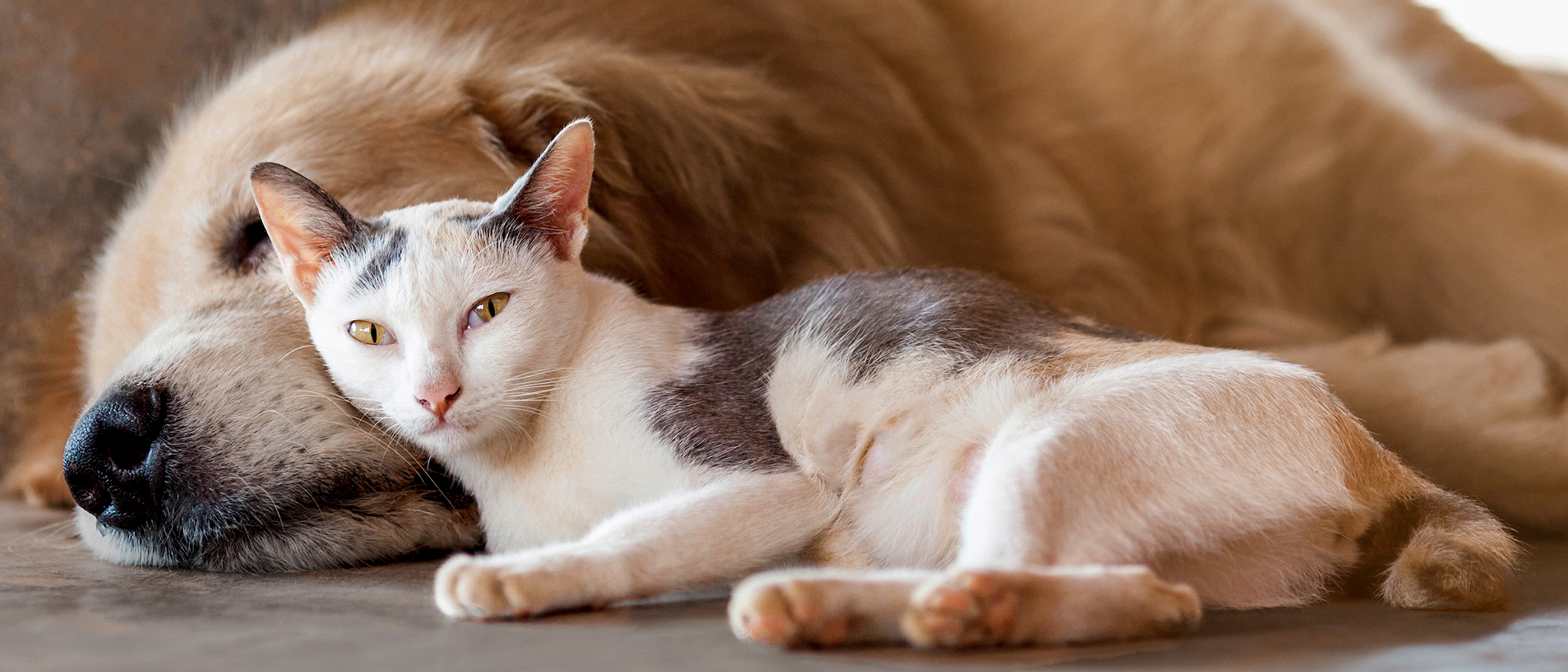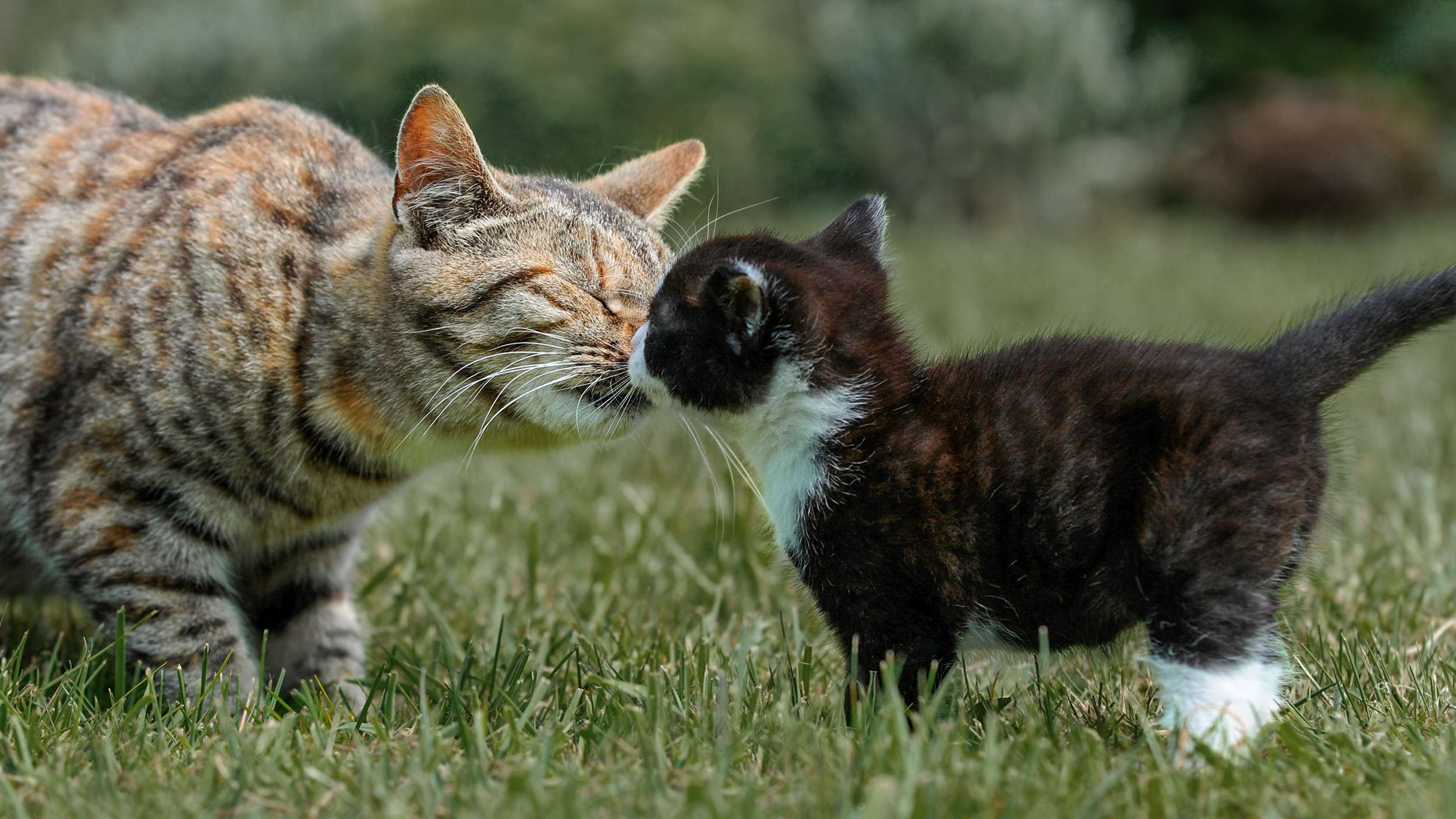Introducing cats to other pets

Introducing a newcomer to established pets can be tricky. Although they will decide their own hierarchy, you should not allow them to be aggressive to each other. Take your time, and be patient, because this is the stage when the ground rules are laid down for your future lives together.
Getting to know their new surroundings, the members of their new family and any other animals, is a very important step in a kitten’s life and will determine how well they settle into their new home. It needs to be a stress-free process as their healthy growth and wellbeing depend on this early care and attention.
Introductions to other animals should always be supervised, as if not done properly confusion and confrontations over shared resources and space can arise. Before introduction occurs it's recommended to arrange a visit to the vet. This will allow you to be sure that your new kitten is not a carrier of anything contagious that could be passed on to other pets.
While there are specific things that you can do to facilitate the introduction of a new kitten to both cats and dogs, there are also some general things to be aware of, in order to support both existing pets and your new arrival:
- Keep your new kitten apart from other pets in the early days so it can get to know its new environment gradually.
- Isolate the kitten in one room after another, so that it may gradually explore the house and not feel the urge to hide under the furniture.
- Keep giving your current pet(s) plenty of attention, and for the first few days, maintain the privileges of the long-standing pet (whether dog or cat).
- Comfort existing pets when in their own territory.
- Reassure your new cat in their own space (a quiet room),
- In the rooms not used by the kitten, rub the lower part of the walls with a cloth that you had previously used to wipe the face and mouth of the kitten, thereby allowing your long-standing pet to become used to his odour.
Introducing your kitten to existing dogs
If your dog already knows and likes cats this process will be much easier, however a dog that is properly socialised will readily accept a new cat. Some older dogs may be less tolerant, but can still learn to live with a cat. Initial introductions should be made with the dog on a lead and the cat unrestrained. Controlled and repeated introductions will allow your dog and new cat to find a way to live calmly together.
You can help things go more smoothly by:
- Keeping your dog on the lead and keeping them calm (reward them for staying calm).
- Make sure your cat can’t be trapped in a corner, and choose a room where it feels comfortable and where there are places to hide – ideally higher up than the dog.
- Don’t try to force your cat into contact with the dog, let them get closer in their own time.

Introducing your kitten to existing cats
Another cat may prove more of a challenge than a dog. Although adult cats tend to be more accepting of kittens than other adults, they will not be too happy to see another cat move onto their territory as they are often solitary by nature. They may express their dissatisfaction through threatening behaviour, and it can take a few days or even months before they have grown to accept the new situation.
By repeating supervised introductions over time until the cats accept each other’s presence and the fear factor appears to fade, the two cats will begin to form a territorial relationship, which you absolutely must respect.
Remember, you cannot force cats to like each other, but you can try to get them to live peacefully together.
When introducing your cats:
- Carry out the introduction carefully and ensure both cats have plenty of space to hide and avoid each other. Pick a neutral location for them to meet. This should be a large room, so they can keep their distance from each other
- Make sure both cats have an escape route from each other.
- Start with short periods then gradually lengthen the time spent together over the next few days.
- Moving forward, remember to provide each cat with their own sleeping area, food and water bowl as they will not want to share.
- At least one litter tray per cat is recommended, plus one extra to allow them to have choice
- If the cats remain indoors, it's also recommended to make sure each one has access to plenty of room to hide, play and explore. For example, each cat could have their own cat tree to provide them with their own space.
- Problems occur when one cat’s territory prevents the other cat from performing a normal activity, so make sure that each cat has the ability to perform all their normal activities (eating, sleeping, drinking, using the litter tray) without confrontation to try and prevent problems with stress from occurring.
While you cannot force animals to like each other, you can encourage good behaviour and respect that will allow them to live together peacefully.
It is important both before you bring an new kitten into the home, and as they learn to live together, to always be mindful of the needs of all animals in the home, to make sure they do not suffer from stress.

Like & share this page